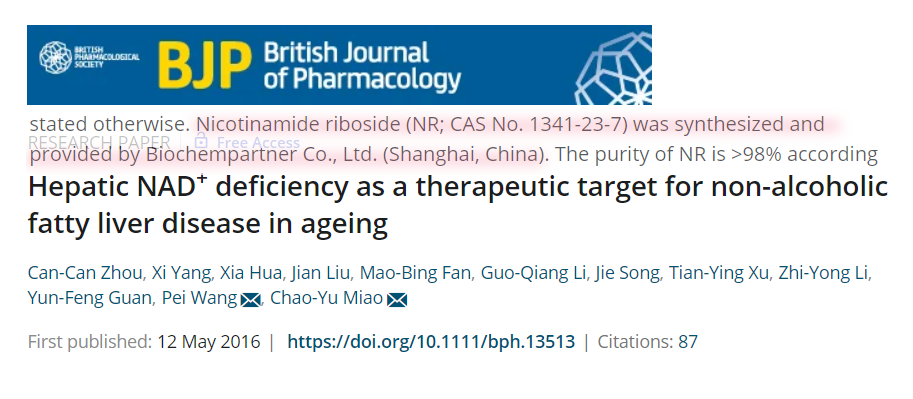Hepatic NAD+ deficiency as a therapeutic target for non‐alcoholic fatty liver disease in ageing

Abstract Background and Purpose Ageing is an important risk factor of non-alcoholic fatty liver disease (NAFLD). Here, we investigated whether the deficiency of nicotinamide adenine dinucleotide (NAD+), a ubiquitous coenzyme, links ageing with NAFLD. Experimental Approach Hepatic concentrations of NAD+, protein levels of nicotinamide phosphoribosyltransferase (NAMPT) and several other critical enzymes regulating NAD+ biosynthesis, were compared in middle-aged and aged mice or patients. The influences of NAD+ decline on the steatosis and steatohepatitis were evaluated in wild-type and H247A dominant-negative, enzymically-inactive NAMPT transgenic mice (DN-NAMPT) given normal or high-fat diet (HFD). Key Results Hepatic NAD+ level decreased in aged mice and humans. NAMPT-controlled NAD+ salvage, but not de novo biosynthesis pathway, was compromised in liver of elderly mice and humans. Given normal chow, middle-age DN-NAMPT mice displayed systemic NAD+ reduction and had moderate NAFLD phenotypes, including lipid accumulation, enhanced oxidative stress, triggered inflammation and impaired insulin sensitivity in liver. All these NAFLD phenotypes, especially release of pro-inflammatory factors, Kupffer cell accumulation, monocytes infiltration, NLRP3 inflammasome pathway and hepatic fibrosis (Masson's staining and α-SMA staining), deteriorated further under HFD challenge. Oral administration of nicotinamide riboside, a natural NAD+ precursor, completely corrected these NAFLD phenotypes induced by NAD+ deficiency alone or HFD, whereas adenovirus-mediated SIRT1 overexpression only partially rescued these phenotypes. Conclusions and Implications These results provide the first evidence that ageing-associated NAD+ deficiency is a critical risk factor for NAFLD, and suggest that supplementation with NAD+ substrates may be a promising therapeutic strategy to prevent and treat NAFLD.




